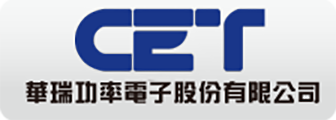Renesas SoC to Double EyeQ5 Efficiency
TOKYO — Renesas Electronics is pumped up. After lying low for a long time, the Japanese chip company is now brimming with confidence, claiming that it’s “ready to intersect” with the demand to produce highly automated vehicles in volume.
In store for Renesas’ roadmap is a yet-to-be-announced next-generation R-CAR SoC, designed for deep learning. Ready to go into advanced city driving autonomous vehicles in 2020, the new SoC will start sampling in 2019. It will deliver “more than 5 trillion operations per second (TOPS) at one watt,” Ryuji Omura, executive vice president at Renesas, revealed in an exclusive interview with EE Times in Tokyo last week. Omura is general manager responsible for the Japanese company’s automotive solution business unit.
The R-CAR SoC, if true, will double deep-learning performance efficiency compared to the Intel/Mobileye’s upcoming EyeQ5 SoC — which, according to Intel — will provide 24 TOPS at 10 watts.
Until this surprising development, Renesas’ practiced pattern has been launching R-CAR SoCs primarily designed for in-vehicle infotainment applications and active safety systems. Renesas offered no hint about specific plans to design an R-CAR SoC for highly automated vehicles.
Indeed, unlike Nvidia and Intel/Mobileye, who have been battling to outshout each other about their self-driving expertise, Renesas has been conspicuously mute on the topic of robocar SoC platforms.
This reticence led some analysts to believe that Renesas might be more interested in ADAS than aggressively pursuing the nascent robocar market. Danny Kim, director and senior advisor at VSI Labs, for example, wondered if Renesas would consider TI and NXP as more of a direct competitor (with revenue largely earned from lower level safety systems) than Nvidia and Intel.
Nothing is further from the truth, according to Renesas. With the next-gen R-Car SoC underway, “We will be competitive in the highly automated vehicle SoC market,” said Omura.
Renesas’ game is to crack the robocar market at the right time with a much lower power and safety-conscious next-gen R-Car SoC, presenting itself as an alternative to Intel/Mobileye and Nvidia.
Current lineup
Renesas believes that covering all of automotive computing tasks by only general purpose GPU calculation presents problems with overall performance and power. The basic concept behind the R-Car Autonomy Platform is to integrate various IP cores for different operations with high throughput internal bus, the company said.
R-CAR H3 is designed as an automotive computing platform for the autonomous-driving era. The R-Car H3 provides cognitive computing capabilities and an enhanced performance that “can process large volumes of information from vehicle sensors accurately in real time, making it ideal for driving safety support systems,” according to Renesas. With the R-Car H3, car OEMs can run applications that require complex processing, such as obstacle detection, driver status recognition, hazard prediction and hazard avoidance. The same SoC can also handle in-vehicle infotainment systems.
Meanwhile, R-Car V3M is a high-performance image recognition SoC primarily aimed at front camera applications. It will serve surround-view systems or even lidars. It delivers low-power hardware acceleration for vision processing, and comes with a built-in image signal processor.
More specifically, the R-Car V3M processor includes two CPU ARM Cortex-A53, a dual lockstep ARM Cortex-R7, as well as IMP-X5+ (Renesas’ recognition engine optimized for interoperation with a CPU) and CNN specialized hardware blocks to accelerate computer vision and deep learning algorithms.
Asked about the use of R-Car V3M inside a lidar, Omura cited LeddarTech, a developer of solid-state lidar technology, as Renesas’ partner. Because the large amount of data and high sampling rate generated by LeddarTech’s LeddarCore IC (designed for solid-state 3D lidars) must be rapidly processed, LeddarTech uses the R-Car V3M for the job.
In a fully autonomous vehicle demonstrated last month at the Consumer Electronics Show, Renesas’ team used six R-Car V3M chips and two sets of R-Car H3 (one for redundancy).
Road to Autonomy
Without question, Nvidia has been the driving force behind autonomous vehicles already in use for trials or in development by tech companies and car OEMs. But Renesas hopes to enter the robocar market in time to grab design wins in volume production models, Omura said.
While AI, the cognitive portion of a robocar, is critical, “AI alone won’t make an autonomous car run,” the Renesas executive stressed. “Autonomous cars won’t drive without having solutions for everything from cloud services to sensing and vehicle control.”
Renesas extends its R-Car platform to pursue design-in opportunities for both ADAS and autonomous vehicles. For Renesas, ADAS cars and robocars are not separate market segments tied to two different platforms. “They are on the same platform and we’re committed to capturing demands from both markets,” said Omura.
But here’s the thing. Beyond the next-gen deep learning R-Car SoC slated for launch next year, what else can Renesas offer the industry to prove it has the chops to outsmart Intel/Mobileye and Nvidia in a cutthroat robocar market?
1. More MCUs and SoCs inside a vehicle
First and foremost, Rensas sees its biggest advantage in the MCUs and SoCs already plugged everywhere into vehicle architecture. “We know a car,” said Katsuhiko Itagaki, senior distinguished engineer in Renesas' automotive solution business. Renesas offer everything from vision chips, cognitive processors to ECUs for breaking, steering and accelerating.
2. Partitioning of a new vehicle architecture
Because a whole automotive system is experiencing drastic change with the emergence of EV and AV, “We know how partitioning inside the vehicle architecture must change,” said Itagaki. Given that 80 percent of new-vehicle architecture is determined by electronics, “We are in a good position to know where to draw a line and create boundaries between different functions inside a vehicle.”
3. Open architecture and a breadth of ecosystem
Third, Renesas “promotes open architecture,” said Omura. By “open,” he’s referring to the more than 200 partners lined up to work with Renesas on the R-Car platform. “Our ecosystem is large and our customers — OEMs and tier ones — can pick and choose specific partners they like to work with,” he noted. “We don’t take a ‘black box’ approach” pursued by competitors [like Mobileye].”
Renesas’ autonomous driving partners include TTTech, QNX, Hella Aglaia, University of Waterloo and Neusoft.
Asked about TTTech, Okumura explained that Renesas has a long-standing strategic relationship. The partnership has advanced to a stage where TTTech is providing customers with what is billed as “highly automated driving platform (HADP)” based on dual R-Car H3 SoCs and Renesas RH850/P1H-C MCU platform.
Renesas also touts its openness for software running on R-Car SoCs. Renesas works with Codeplay Software Ltd. (Edinburgh, Scotland), experts in high-performance compilers and software optimization for multi-core processing. The collaboration allows programs already written in CUDA for Nvidia’s SoC to be brought to R-Car SoCs, using Codeplay’s OpenCL open standard-based software framework, Omura explained. The framework, first made available on R-Car H3 as a proof of concept, is now coming to the R-Car V3M and other R-Car SoCs of Renesas’ autonomous platform for both ADAS and automated driving.
Renesas’ ecosystem also casts a wider net. Members range from a mapping company to a cyber security technology company. Consider, for example, an HD mapping company like Usher (Detroit). Much like Mobileye touts building Road Experience Management (REM) by using harvesting agents (camera-equipped vehicles), Usher creates its own HD maps by combining long-range remote sensing technologies with the company’s own geo-spatial and machine learning techniques. Presumably, Usher software interprets and communicates road level detail to enable intelligent control decisions.
Fortinet (Sunnyvale, Calif.), a provider of security technologies across the IT infrastructure, is also working with Renesas. The company demonstrated at CES a cybersecurity prototype. The companies integrated the Fortinet FortiOS security operating system with Renesas’ R-Car H3 SoC to secure vehicle network domains, cloud-based services and applications. They created mock cyber breaches on a prototype connected car at CES, including intrusion prevention system (IPS) attacks and a DDoS (distributed denial of service) attacks to showcase the effectiveness of automated, integrated security to protect drivers from intruders taking control of the vehicle or its applications.
4. ASIL-D ECU
Renesas claims that its ASIL-D safety ECU is at least two generations ahead of Infineon, its biggest competitor. “We are already sampling our new safety ECUs fabbed by using a 16-nm FinFET process technology,” said Omura.
Above all, “Safety is where we believe our key strength lies,” Omura noted. Beyond knowing what it takes to meet with ASIL-D requirements, he said Renesas has been focused on figuring out how to deal with issues of robustness. “Our goal at Renesas’ R&D team is to take a system-level approach for safety,” he said.
Laser focus on Automotive
According to Semicast Research data released a year ago, Renesas was the third largest automotive chip supplier in the world in 2016, after NXP Semiconductors and Infineon. Renesas, however, has somehow maintained its image of the poster child of the embattled Japanese semiconductor industry.
This no longer holds true.
Aggressively restructuring for several years, Renesas now claims a “steep topline recovery,” increasing revenue from 744 billion yen in fiscal year 2012 to an estimated 772 billion in 2017, with a gross margin improved from 31 to 46 percent during that period. Renesas trimmed its workforce by 40 percent to 20,000 employees. Meanwhile, the company completed the integration of Intersil, acquired in 2016.
Today, half of Renesas revenue is in the automotive sector. Renesas has also substantially narrowed its product portfolio, shifting its MCU sprawling portfolio to focus almost exclusively on automotive.
Seventy percent of the company’s automotive business today comes from customers outside Japan.
Renesas’ automotive teams are spread among Europe, the U.S. and Japan. Its U.S. team, with some key members who formerly worked at Magna, a tier one company, focuses on system designs for ADAS and autonomous cars. The European team is working on the architecture of autonomous vehicles.
在线留言询价

SoCs shipping with integrated RF signal chain
- 一周热料
- 紧缺物料秒杀
| 型号 | 品牌 | 询价 |
|---|---|---|
| CDZVT2R20B | ROHM Semiconductor | |
| BD71847AMWV-E2 | ROHM Semiconductor | |
| RB751G-40T2R | ROHM Semiconductor | |
| TL431ACLPR | Texas Instruments | |
| MC33074DR2G | onsemi |
| 型号 | 品牌 | 抢购 |
|---|---|---|
| ESR03EZPJ151 | ROHM Semiconductor | |
| IPZ40N04S5L4R8ATMA1 | Infineon Technologies | |
| TPS63050YFFR | Texas Instruments | |
| STM32F429IGT6 | STMicroelectronics | |
| BU33JA2MNVX-CTL | ROHM Semiconductor | |
| BP3621 | ROHM Semiconductor |
- 周排行榜
- 月排行榜
AMEYA360公众号二维码
识别二维码,即可关注


请输入下方图片中的验证码:






















